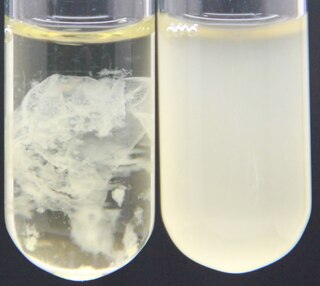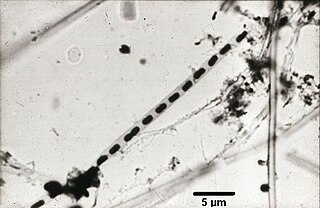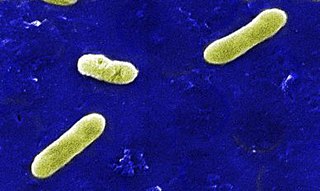
The Campylobacterales are an order of Campylobacterota which make up the epsilon subdivision, together with the small family Nautiliaceae. They are Gram-negative. Most of the species are microaerophilic.

Caulobacterales is an order of gram-negative pseudomonadota within the alpha subgroup.

The Hyphomicrobiales are an order of Gram-negative Alphaproteobacteria.

The Rhodocyclales are an order of the class Betaproteobacteria in the phylum "Pseudomonadota". Following a major reclassification of the class in 2017, the previously monofamilial order was split into three families:

The Comamonadaceae are a family of the Betaproteobacteria. Like all Pseudomonadota, they are Gram-negative. They are aerobic and most of the species are motile via flagella. The cells are curved rod-shaped.

Desulfovibrionales are a taxonomic order of bacteria belonging to the phylum Thermodesulfobacteriota, with four families. They are Gram-negative. The majority are sulfate-reducing, with the exception of Lawsonia and Bilophila. All members of this order are obligately anaerobic. Most species are mesophilic, but some are moderate thermophiles.
The Syntrophobacterales are an order of Thermodesulfobacteriota. All genera are strictly anaerobic. Many of the family Syntrophobacteraceae are sulfate-reducing. Some species are motile by using one polar flagellum.
The Methylophilaceae are a family of Pseudomonadota, given their own order. Like all Pseudomonadota, they are Gram-negative. The cells are slightly curved or straight rod-shaped.

The Cardiobacteriaceae are a family of Pseudomonadota, given their own order. They are Gram-negative and rod-shaped, with diameters around 0.5 to 1.7 μm and lengths from 1–6 μm.

The Alteromonadales are an order of Pseudomonadota. Although they have been treated as a single family, the Alteromonadaceae, they were divided into eight by Ivanova et al. in 2004. The cells are straight or curved rods. They are motile by the use of a single flagellum. Most of the species are marine.

The Alcaligenaceae are a family of bacteria, included in the order Burkholderiales. Members are found in water, soil, humans, and other animals. Some species, like Bordetella, are pathogenic for humans and for some other animals.

The Oxalobacteraceae are a family of bacteria, included in the order Burkholderiales. Like all Pseudomonadota, Oxalobacteraceae are Gram-negative. The family includes strict aerobes, strict anaerobes, and nitrogen-fixing (diazotrophic) members. The cells are curved, vibroid, or straight rod-shaped.

Gracilicutes is a clade in bacterial phylogeny.
Bergey's Manual of Systematic Bacteriology is the main resource for determining the identity of prokaryotic organisms, emphasizing bacterial species, using every characterizing aspect.
The Marinilabiliaceae are a family of bacteria.
Rhodomicrobium is a microaerobic to anaerobic, purple non-sulfur, cluster-building genus of bacteria. Rhodomicrobium uses bacteriochlorophyll a and bacteriochlorophyll b for photosynthesis and occurs in fresh- and sea-water and in soil
Aminobacter carboxidus is a bacterium from the genus Aminobacter which has been isolated from soil in Moscow in Russia.
Methylorubrum aminovorans is a bacterium from the genus Methylorubrum which has been isolated from soil.
Tistrella is a bacterial genus from the family of Rhodospirillaceae. Tistrella produces didemnins.
Aequorivita is a Gram-negative and strictly aerobic bacterial genus from the family of Flavobacteriaceae.










